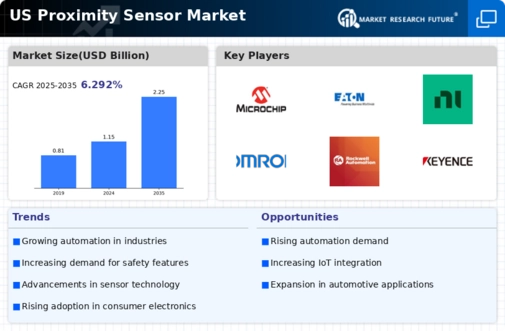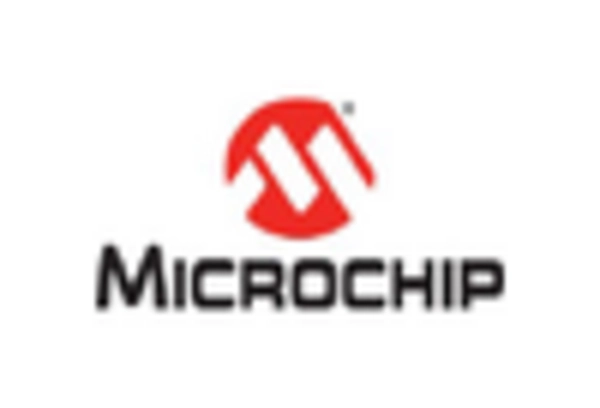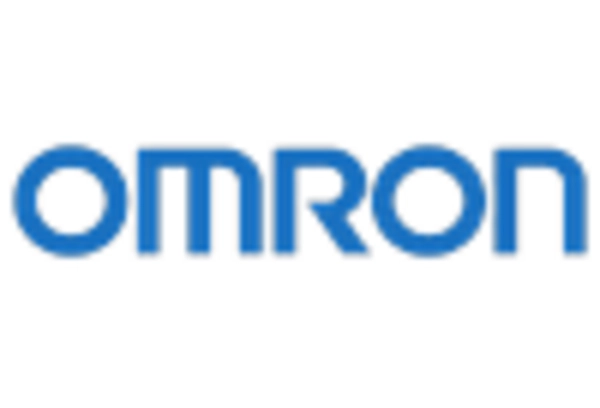Rising Demand for Automation
The increasing demand for automation across various industries is a pivotal driver for the proximity sensor market. As manufacturers seek to enhance operational efficiency and reduce labor costs, the integration of proximity sensors in automated systems becomes essential. Industries such as manufacturing, logistics, and healthcare are increasingly adopting these sensors to streamline processes. For instance, the market for industrial automation is projected to grow at a CAGR of approximately 10% from 2025 to 2030, indicating a robust demand for proximity sensors. This trend suggests that the proximity sensor market will likely experience substantial growth as automation technologies continue to evolve and expand.
Emergence of IoT Applications
The emergence of Internet of Things (IoT) applications is a transformative driver for the proximity sensor market. As IoT technology continues to proliferate, the need for sensors that can provide real-time data and enhance connectivity becomes paramount. Proximity sensors are integral to various IoT applications, including smart homes, industrial automation, and healthcare monitoring systems. The IoT market in the US is projected to reach approximately $1 trillion by 2025, with a significant portion of this growth attributed to sensor technologies. This trend suggests that the proximity sensor market will likely experience substantial growth as IoT applications become more prevalent and sophisticated.
Growth in Consumer Electronics
The proliferation of consumer electronics is significantly influencing the proximity sensor market. Devices such as smartphones, tablets, and smart home appliances increasingly incorporate proximity sensors to enhance user experience and functionality. In 2025, the consumer electronics market in the US is expected to reach approximately $400 billion, with a notable portion attributed to smart devices utilizing proximity sensing technology. This growth indicates a strong potential for the proximity sensor market, as manufacturers strive to innovate and integrate advanced features into their products. The demand for seamless interaction and automation in consumer electronics is likely to propel the adoption of proximity sensors.
Expansion of Smart Infrastructure
The expansion of smart infrastructure initiatives in urban areas is a significant driver for the proximity sensor market. As cities evolve into smart cities, the integration of proximity sensors in public transportation, traffic management, and environmental monitoring systems becomes increasingly vital. The US government has allocated substantial funding for smart city projects, with investments expected to exceed $100 billion by 2030. This investment indicates a growing recognition of the importance of proximity sensors in enhancing urban living and operational efficiency. Consequently, the proximity sensor market is poised to benefit from this trend as cities adopt advanced technologies to improve infrastructure.
Increased Focus on Safety and Security
The heightened focus on safety and security across various sectors is driving the demand for proximity sensors. In industries such as automotive, manufacturing, and public safety, proximity sensors play a crucial role in enhancing safety measures. For example, the automotive sector is increasingly integrating proximity sensors in advanced driver-assistance systems (ADAS) to prevent accidents and improve vehicle safety. The market for ADAS is projected to grow at a CAGR of around 15% from 2025 to 2030, suggesting a robust demand for proximity sensors. This trend indicates that the proximity sensor market will likely expand as safety regulations become more stringent.
















Leave a Comment